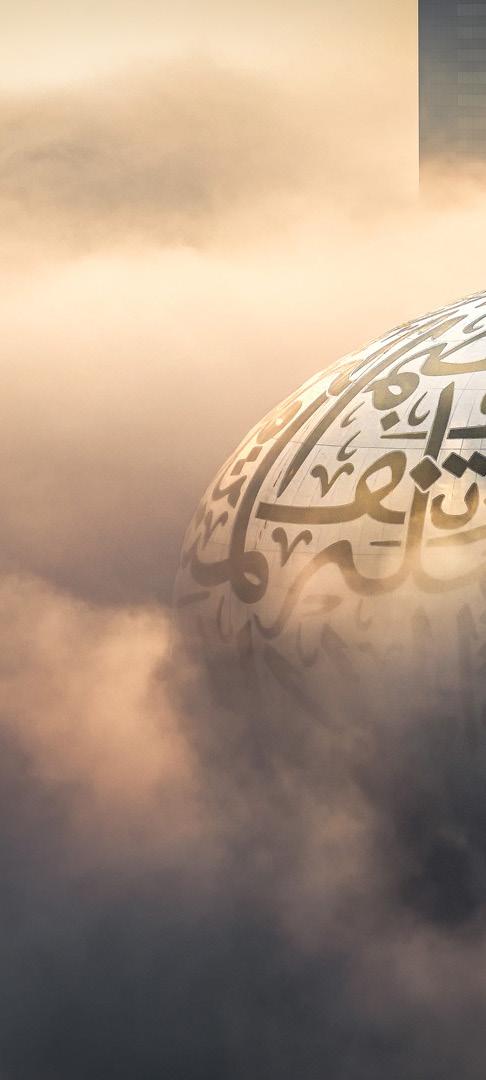
5 minute read
WHERE THE FUTURE LIVES
from LuxLife 2022
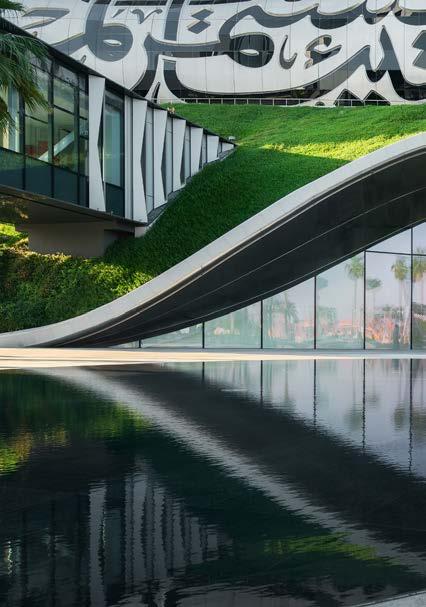
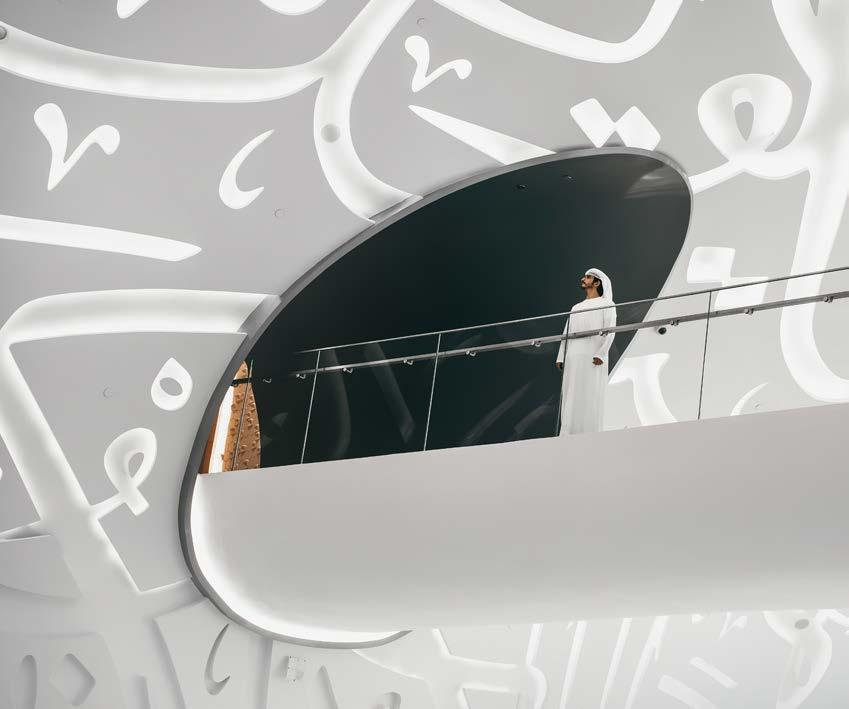
Advertisement
Lobby Entrance
Where the future lives Go behind the scenes at
Dubai’s newest attraction, the striking Museum of the Future, which has been dubbed the most beautiful building on the planet
What will the world look like in 2071? The answer lies within one of Dubai’s most significant landmarks – the Museum of the Future. Looming 77 metres high above Sheikh Zayed Road, this new attraction became known to the world long before it officially opened in February 2022, thanks to its striking façade. The building’s unconventional torus shape makes it one of the most complex construction projects ever attempted. And with no internal pillars, it’s an engineering miracle of sorts, highlighting future construction technologies. It is, therefore, only fitting that the experiences inside bring humanity’s vision of the future to life.
WELCOME TO THE FUTURE
Spread across seven levels, the museum’s narrative unfolds in five chapters. Before the journey begins, visitors are asked to open their minds to new possibilities to reimagine our shared future. But it is important to note that the exhibits that lie inside are not merely predictions, but rather solutions to the challenges we face in the present and ones that may arise in the future. Visitors are invited, not to be mere spectators, but to collaborate in empowering mankind to build a better future. Museum of the Future
Chapter 1:
LAUNCH INTO SPACE
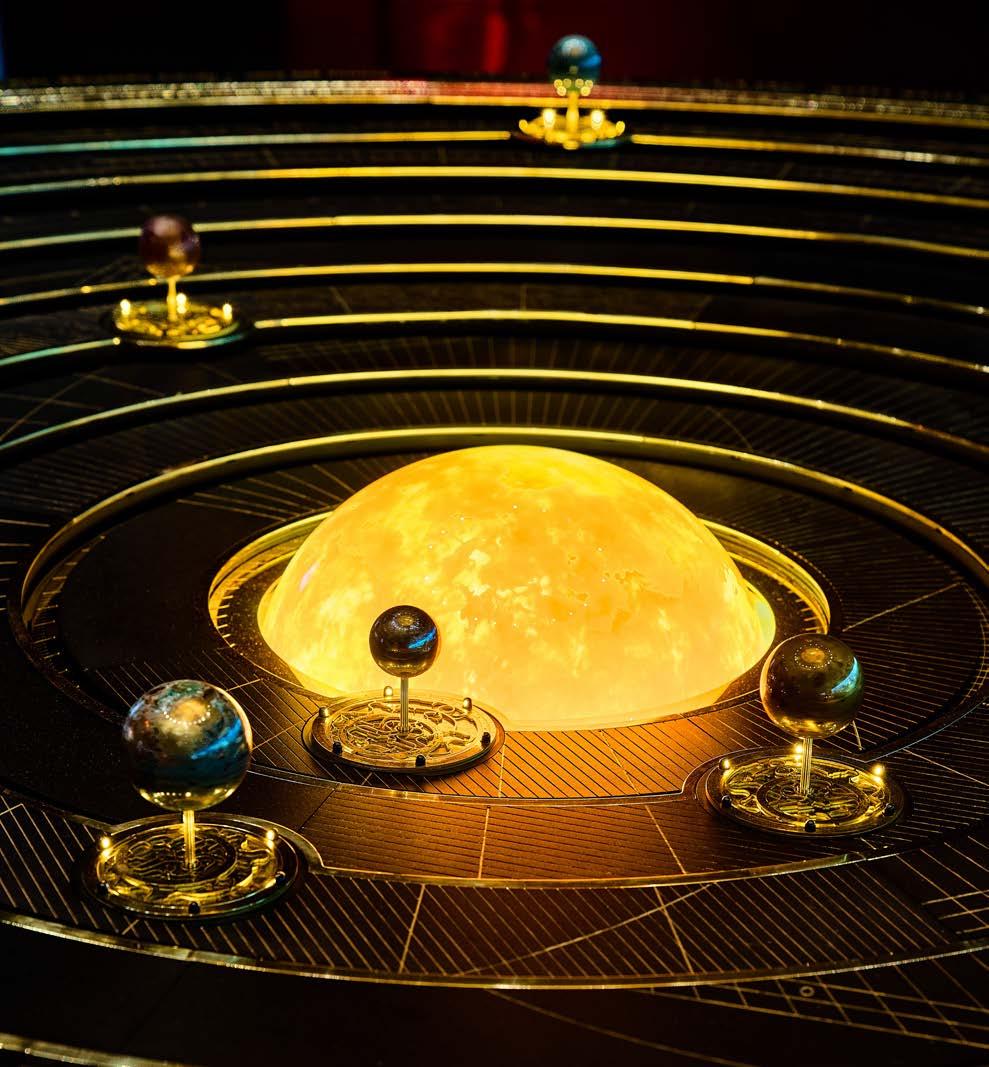
On the topmost level of the Museum of the Future, visitors board a replica of a space shuttle made by NASA in 1981 and are launched into space in a simulated journey filled with bumps and turbulence, which takes them roughly 600 kilometres above Earth. Four and a half minutes after liftoff, the space shuttle docks with OSS Hope – named after the UAE’s Mars probe. Here, visitors can become astronauts for the day by embarking on one of six immersive space missions, studying inventions and discoveries, monitoring important projects or simply taking in the star-filled sky from outer space, complete with a view of our beautiful home planet.
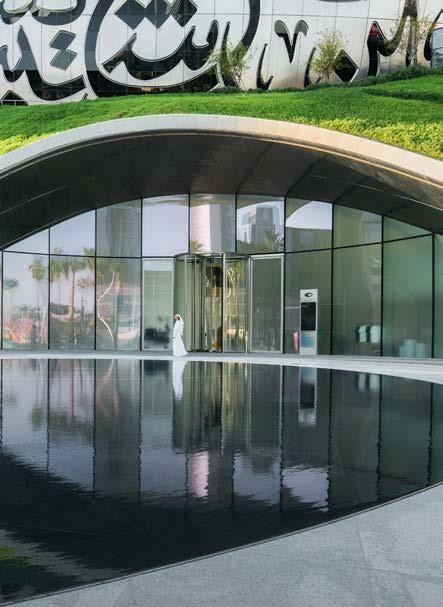
OSS Hope
Chapter 2:
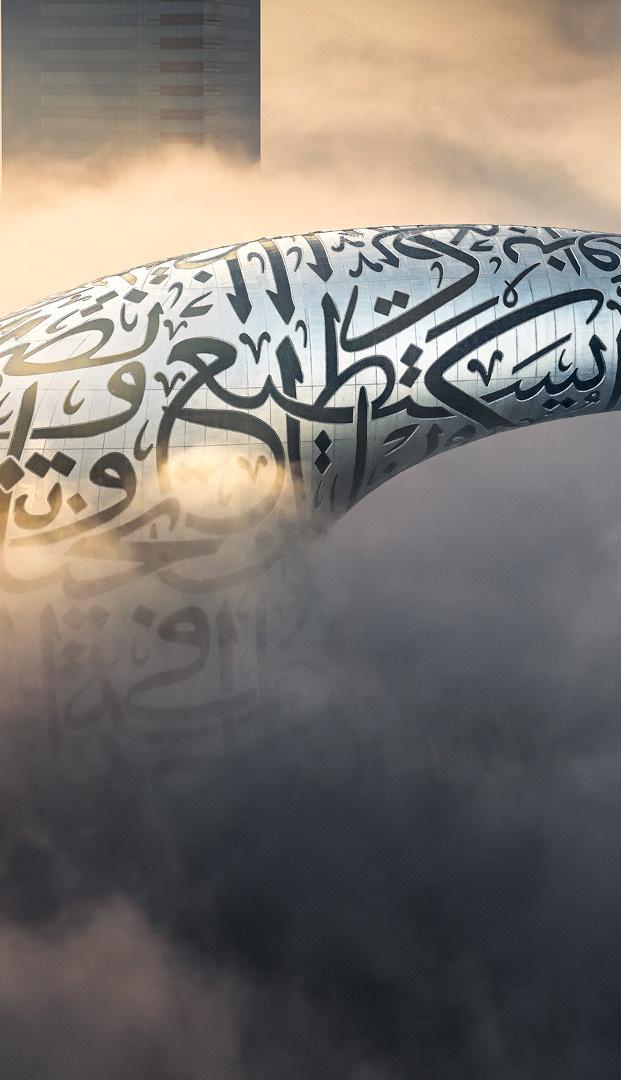
HEAL THE WORLD
Back on terra firma, the wonders of nature come to life through a digital recreation of the Amazonian rainforest at the Heal Institute. Projected on a large screen is the thriving ecosystem of the Amazon, with actual footage from the South American rainforest, complete with the sounds of nature. Visitors will be able to discover the interplay between hundreds of species that survive in this environment and observe details that are otherwise invisible to the naked eye. Alongside the Amazon sits the Vault of Life comprising a DNA library of more than 2,400 plant and animal species. Here, visitors can mix various DNA sequences to repair the damage done by climate change and apply the information to see what extinct species can be brought back to life and how endangered species can further be preserved. DNA Library
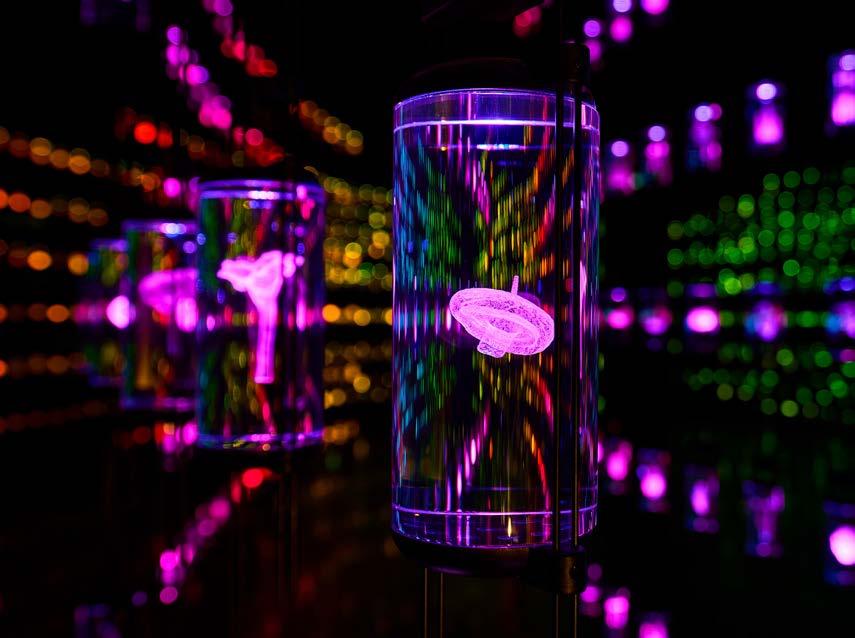
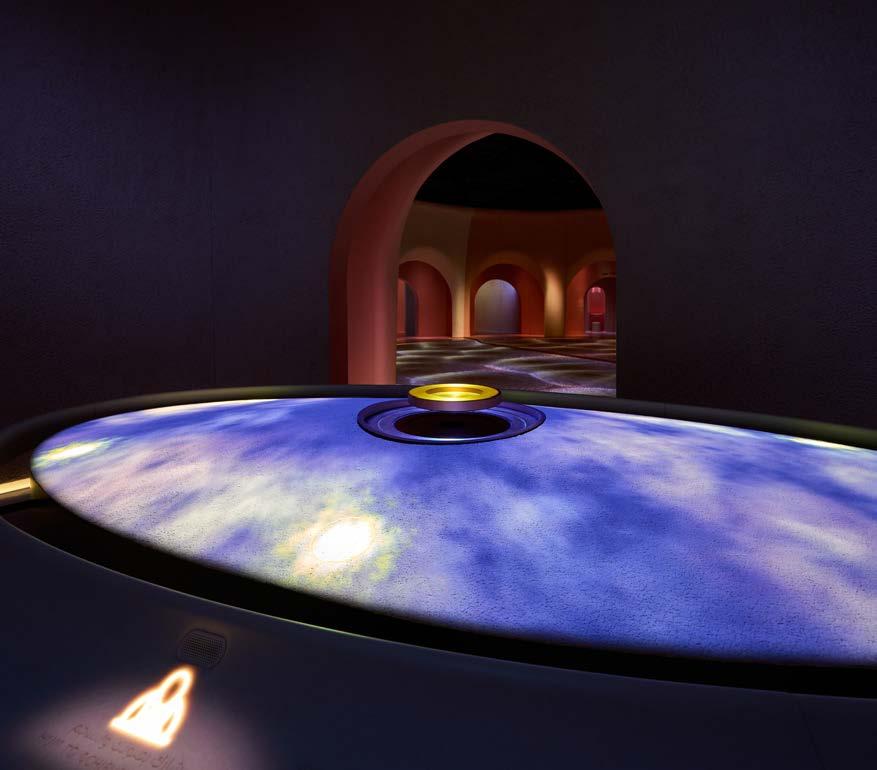
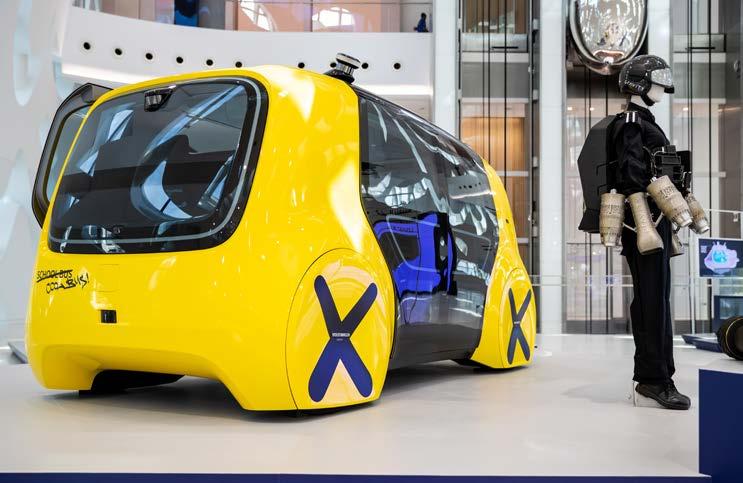
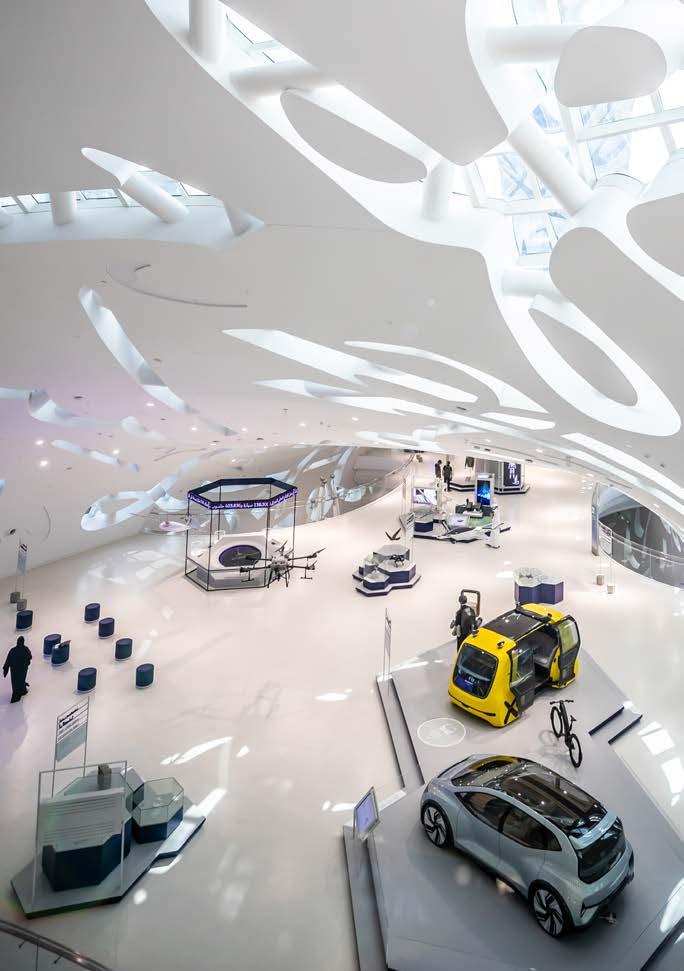
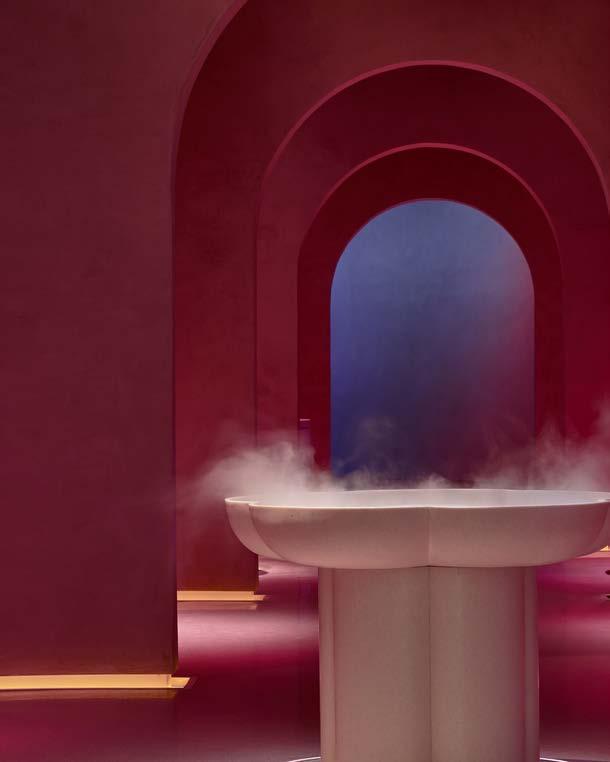
The Oasis
Chapter 3:
TIME TO DISCONNECT
At Al Waha (The Oasis, in English), visitors are invited to take a break from technology and revive their senses. Designed to promote mental health, the experience combines sound healing, light therapy and meditation techniques to encourage visitors to leave all their worries and stresses behind. In the innermost sanctuary, one can reconnect with all their physiological senses and find inner peace for the mind, body and spirit.
Tomorrow Today exhibition Al Waha
Chapter 4:
SEE FUTURE TECHNOLOGY IN ACTION
What will the future of mobility look like? How will artificial intelligence shape our future? What new medical technologies will contribute to our health and wellness? And how can we combat climate change? At Tomorrow Today, visitors will find all their questions about the next 50 years answered. In showcase is a series of innovations developed by designers, researchers and corporations who are working to leverage technology to address everything from environmental concerns to cultural issues. Future technologies
Chapter 5:
THE LITTLE ONES TAKE OVER
Encouraging tomorrow’s generation to take over, at Future Heroes, junior visitors are encouraged to play, learn, explore and contribute to the imagination lab, where they can design and build their own future.
LEAVE FEELING INSPIRED
The immersive displays at the Museum of the Future are not just about the quirky gadgets, such as robotic falcons and selfdriving cars. The exhibits are curated to encourage visitors to bring back the knowledge gained into the present and apply it to their everyday lives to inspire change in the world. As such, the museum aims to become a platform to study the future and a living research centre, with exhibits that constantly evolve to mirror a rapidly changing world against a brighter future that’s yet to come.
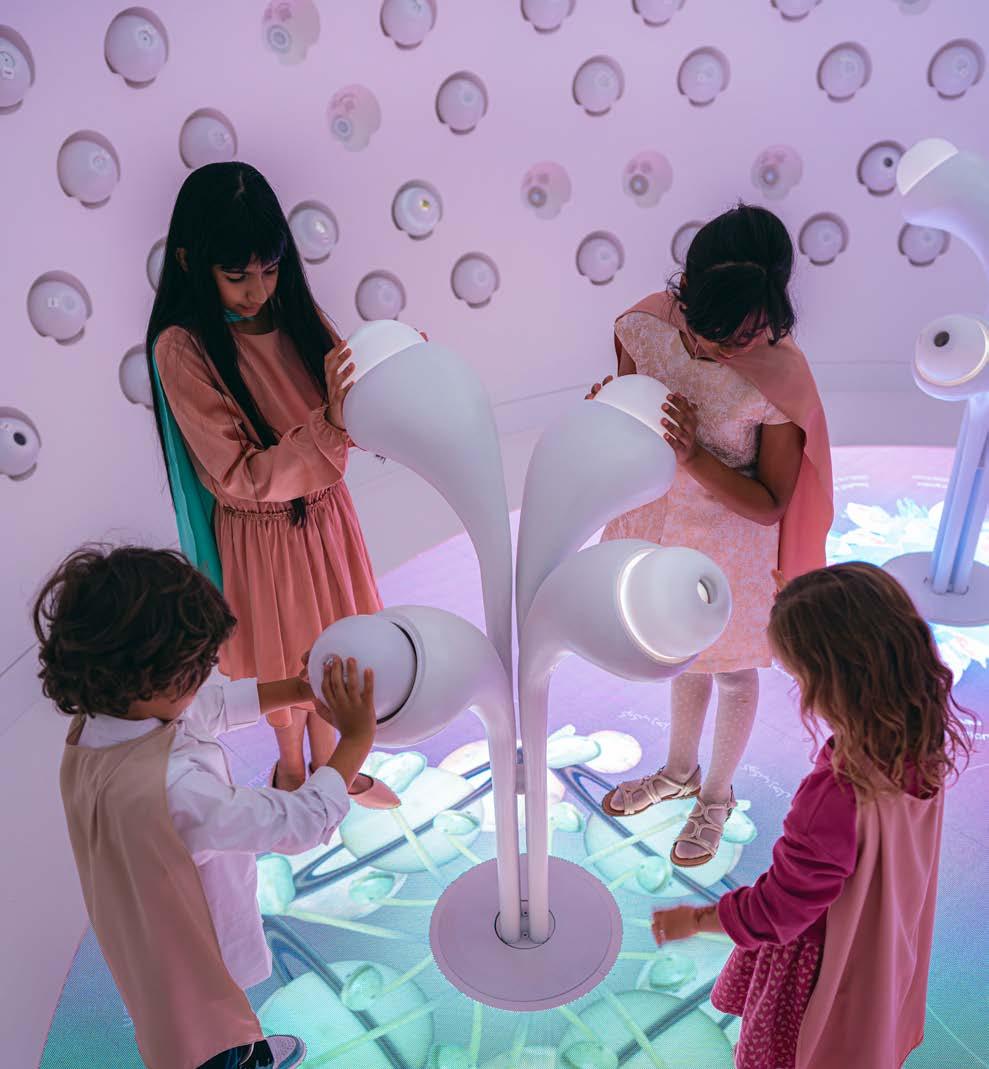
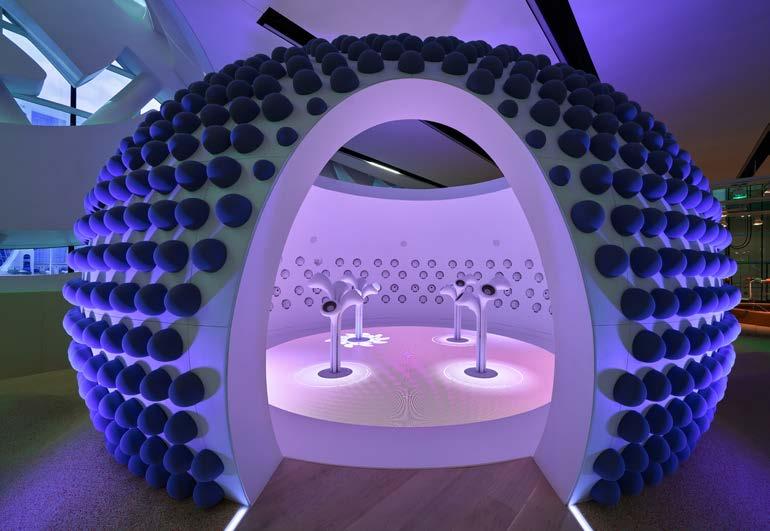
Future Heroes
FORWARDTHINKING DESIGN
Designed by Dubai-based architect Shaun Killa, the Museum of the Future is an exemplary model of sustainability. The entire surface of the building is made of developed glass, manufactured using new technologies to improve the quality of the interior and exterior thermal isolation. The enormous stainless steel façade of the building extends over an area of 17,600 square metres, and in keeping with its ethos of innovation, the structure’s 1,024 panels were produced using automated robotic arms, a tribute to the very technology the museum stands to celebrate. About 14 kilometres of the museum’s An imagination lab for junior visitors surface is covered in Arabic calligraphy with a special focus on the wise words of His Highness Sheikh Mohammed bin Rashid Al Maktoum, Vice President and Prime Minister of the UAE and Ruler of Dubai. One of the quotes featured reads as follows: “The future belongs to those who can imagine it, design it and execute it. The future does not wait. The future can be designed and built today.” In yet another genius move, the script doubles as the museum’s windows, casting light through the interior by day and illuminated by night to create a surreal, dreamy effect. The symbolism in its design is also intrinsic to its philosophy as the exterior of the museum forms a human eye, or rather, the eye that sees tomorrow, while the void in the heart of the structure also represents the unknown that humans seek to discover.










